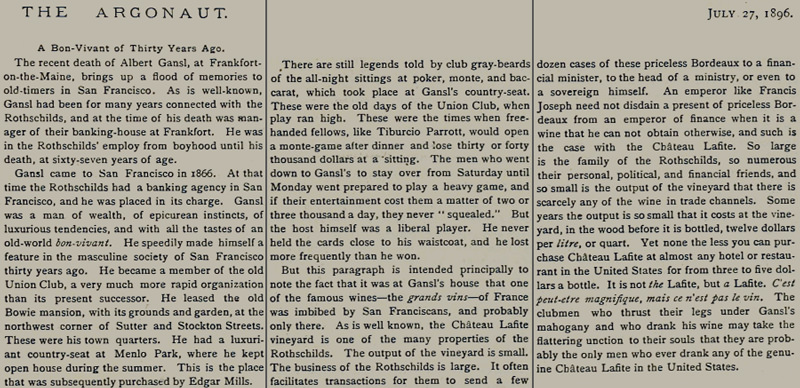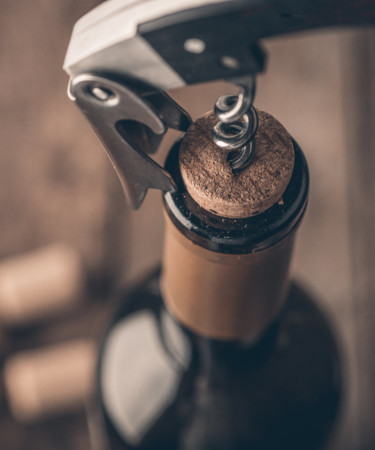It’s all going so well. You Yelped the place and it has the right amount of stars and positive reviews. You hear it has a stellar wine list and although you are not a connoisseur, you are confident that the staff will be ready and willing to guide you through the selection process without making you look like a fool in front of your date. They do and you’re off on your culinary journey with a nice bottle of wine. The conversation is stimulating, the vibe is right and you can’t wait to swirl and sip. The server arrives with your bottle and presents it. You nod your approval while you and your companion smile at each other as the cork is stabbed and extracted with that age old quiet pop. Ah… what a wonderful sound.
But before your server offers you the first sip, a well known ritual confirming that the wine will be enjoyable, something happens that derails the mood. You are presented with the cork. What do you do now? Do you take it and smell it? Lick it? Hold it up to the light, admiring something you could care less about? Should you care about it at all? A slight trickle of sweat runs down the nape of your neck as you take the cork and examine it for reasons unknown while your server waits patiently and your dining companion looks on. The flow of the night has been interrupted by the small ritual filled with mystery and anxiety. What is this all about?
Presenting the cork to a customer has some historical connections. Back in the day, around the 1800’s when glass bottles started to become the norm, wine cellars were naturally cold and humid which meant that over time there was the possibility that the wine label would deteriorate. With a deteriorated label the label alone could not confirm to a diner that the bottle in front of them was indeed the bottle they ordered. So to solve this problem winemakers began branding their logo into the corks to ensure association.
The problem is that this ritual over time has been associated with fine dining and sometimes a misinformed or ill-trained staff will pop the bottle, give you a taste, fill your glasses (often too high), set the cork on the table and walk away.
This problem of wine labels going bad was also an incentive for shady business owners. After the 1855 classification of Bordeaux, certain chateaux were in high demand. If a paper label of a sought after bottle from a particular winemaker was worn away or torn beyond recognition and the cork was not branded, low life proprietors could just tell the customer it was said bottle and the customer was none the wiser. This kind of dupe would also occur on the distribution side, where criminals would make faux Lafite and label it as the chateaux. An honest business owner would then be the victim. Presenting a branded cork made certain that that bottle came from the right place. And it really ends there.

The problem is that this ritual over time has been associated with fine dining and sometimes a misinformed or ill-trained staff will pop the bottle, give you a taste, fill your glasses (often too high), set the cork on the table and walk away. It’s a lame way of faking good wine service. If you are in a restaurant and this happens, you know that the place is, for lack of a better term, half ass. Give the cork back to the server and don’t let it dance around the table during your meal.
It should go generally like this: The bottle is presented. Upon approval the server or somm will open the bottle of wine and place the cork on the table or on a coaster. As the first sip is poured the cork is there just to confirm that the branding matches the label. It’s also a way to see how much a winemaker invests in their closures. Is it one piece of cork – the most expensive kind? Is it a composite cork made from cork scraps – the lesser expensive kind? Or is it a plastic wad – the least expensive kind? In addition, you may see some red gunky build up on the cork that the server will wipe on a serviette. This often confirms aging for older wines as well as proper storage.
After you have sniffed and sipped, the server will fill your glasses just enough for you to be able to swirl. They’ll then ask you if you would like to hold on to the cork for sentimental value or in order to remember the wine – though nowadays people usually just snap a pic with their phone.
Smelling the cork will not tell you anything about the wine. It may smell nice but it won’t give you any of the awesome you are about to enjoy. The wine is where all the joy is, not the cork.
And that’s it. So next time a cork is presented ,whether it be the right or wrong way, you can have confidence in either situation. Give it back, keep it. Don’t smell it.
